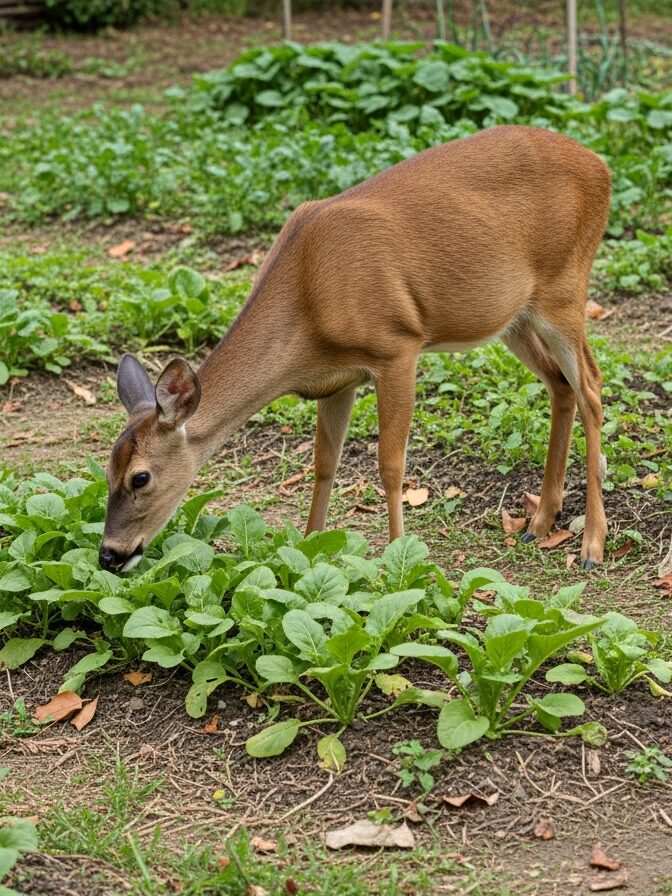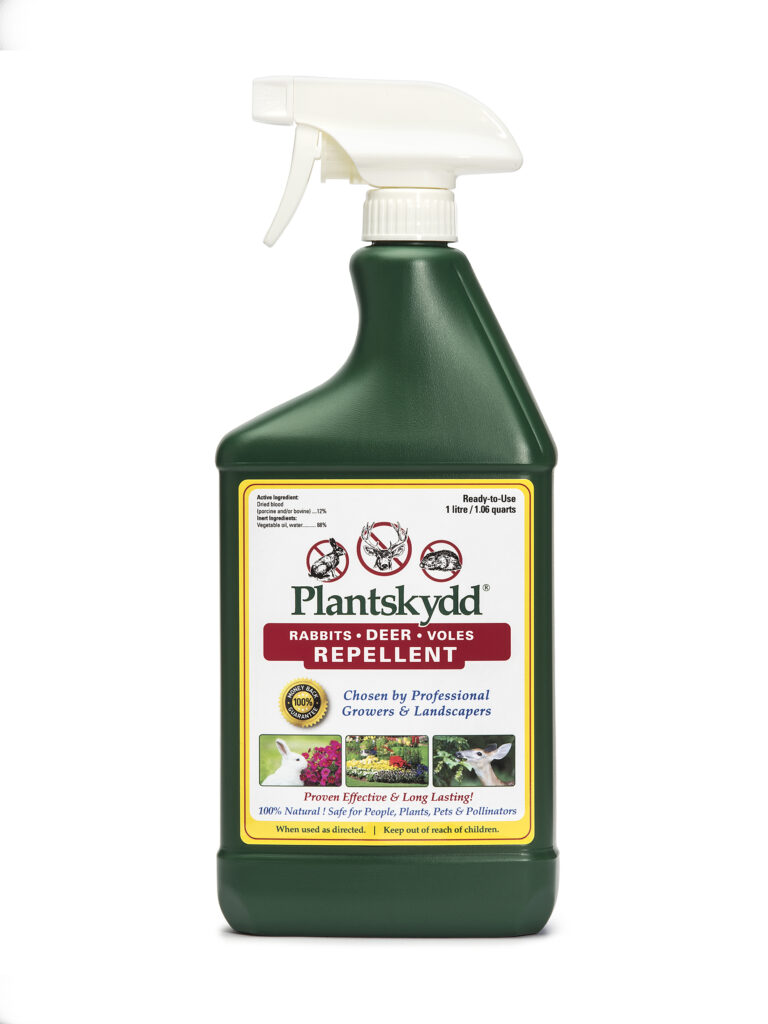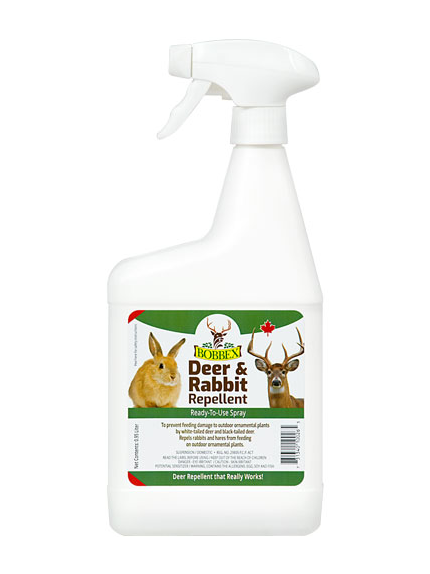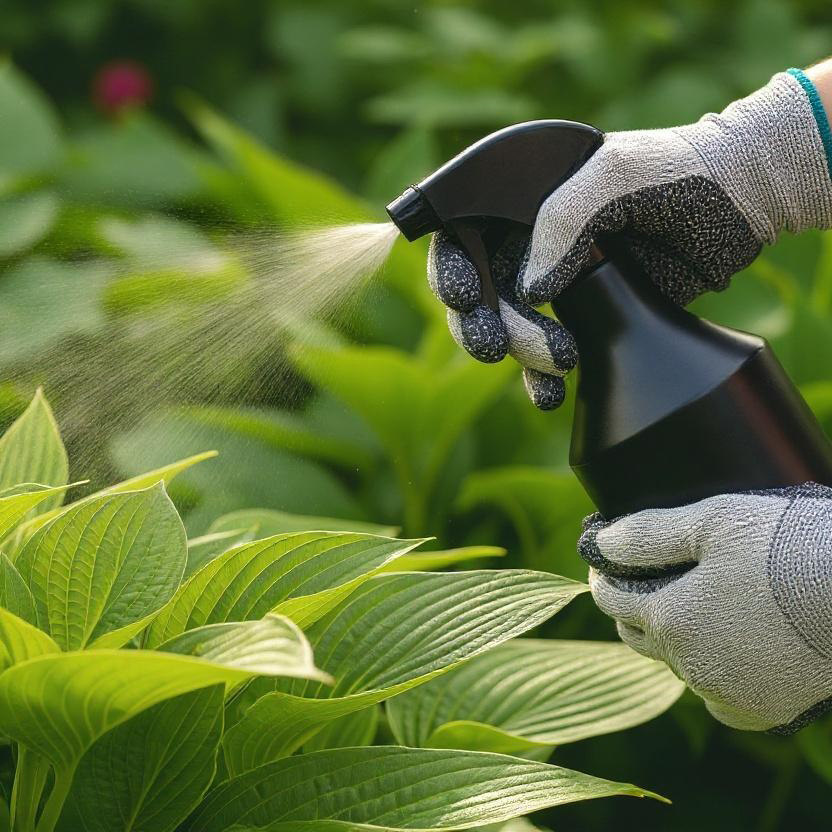Your Complete Guide to Scent-Based Protection
When physical barriers aren’t practical and motion sensors aren’t enough, deer repellent sprays become your secret weapon. Think of them as an invisible fence made of scent – one that tells deer “this garden is off-limits” without blocking your view or requiring major construction. Whether you’re protecting a few prize roses or an entire vegetable patch, the right repellent strategy can dramatically reduce deer damage while keeping your garden looking natural and accessible.
The science is simple: deer have incredibly sensitive noses (about 1,000 times more sensitive than ours), so what might smell mildly unpleasant to us can be absolutely revolting to them. The key is knowing which scents work, how to apply them properly, and when to switch things up to stay ahead of these adaptable creatures.
How Deer Repellents Work
For those who can’t fence everything (or want layered protection), deer repellent sprays are a valuable tool. These are mixed solutions – either purchased or homemade – that you apply to plants to make them smell or taste unpleasant to deer. Deer have an extremely sensitive sense of smell, so many repellents leverage odors that deer find repugnant or alarming (even if humans don’t notice them much). Others add bitter or spicy flavors that deer hate. Here’s how repellents work, and how to use them effectively.

The science is simple: deer have incredibly sensitive noses (about 1,000 times more sensitive than ours), so what might smell mildly unpleasant to us can be absolutely revolting to them. The key is knowing which scents work, how to apply them properly, and when to switch things up to stay ahead of these adaptable creatures.
Commercially Purchased Deer Repellents
A range of products are designed to deter deer using smell or taste. These repellents often contain ingredients like putrefied egg solids, garlic, predator urine, blood meal, hot pepper, or soap, which deer find offensive to their highly sensitive noses and mouths. Here are what we consider to be the best deer repellents for gardens:

PlantSkydd®
- Blood-based repellent made from dried animal blood
- Triggers a deer’s instinct to avoid areas where predators may be present
- OMRI-listed for organic use
- Doubles as a nitrogen-rich foliar fertilizer (dried blood = blood meal)
- Water-resistant (lasts 3–4 months in summer, and up to 6 months in winter)
- Gardeners report effective protection for at least 2 months, even through rain or snow

Bobbex®
- Uses a mix of eggs, fish, garlic, and capsaicin to create both a scent and taste aversion
- Safe for use on ornamentals, trees, and edibles
- Does not contain synthetic chemicals; biodegradable and environmentally friendly
- Requires regular reapplication, especially on new growth or after significant rainfall
- Noted for having a lingering odor upon application, which fades as it dries
Other Repellents
- Liquid Fence®, Deer Away®, and similar products use primarily egg-based formulations
- Consistently rank well in tests and anecdotal reports
- Most require reapplication every few weeks or after heavy rainfall
- Always follow label directions for maximum effectiveness
Key Tips for Using Commercial Repellents:
- Apply on a dry day with no rain expected for at least 24 hours (you want any product to have time to fully dry to reach its full effectiveness)
- Spray new growth regularly, or as directed based on specifications. New growth often won’t be protected by previous applications (except when using PlantSkydd®, as it works instinctually as opposed to just a foul smell/taste)
- Rotate products occasionally to avoid deer becoming accustomed to one scent
- Combine with other deterrents (like fencing or motion sensors) for best results

Want to maximize your repellent effectiveness?
Pair these sprays with plants deer naturally avoid. Download our free Zone 2-4 Deer-Resistant Plant List for a complete protection strategy.
Homemade Deer Repellent Recipes
For those who prefer a DIY approach, several effective deer repellents can be made using common household ingredients. These homemade deer repellents work by creating strong odors or unpleasant tastes that discourage deer from browsing, and are also useful for those that prefer a natural deer repellent spray. NOTE: Ensure to test your spray on a small area first for tender plants or any plants you’re not sure of the effect, as sometimes these sprays can cause discoloration or damage to foliage.

Garlic & Hot Pepper Spray
- Blend a few cloves of garlic and/or hot peppers (or cayenne flakes) with water
- Add a few drops of dish soap (acts as a surfactant to help it stick to leaves)
- Strain if necessary and spray directly onto plant foliage
- Produces a spicy, pungent coating that deer find unappealing to both nose and tongue

Egg & Milk Spray
- Mix 1–2 raw eggs, a splash of milk, and a small amount of oil or dish soap
- Dilute with approximately 1 gallon of water
- Apply to plants using a spray bottle or garden sprayer
- As it spoils, the solution emits a sulfur-like odor (similar to commercial egg-based repellents)
Tips for Homemade Repellents:
- Shake well before each use (ingredients can separate or settle)
- Apply on dry days when rain isn’t expected for at least 24 hours
- Spray until leaves are well coated, including the undersides
- Reapply frequently, especially:
- Once a week during active growth
- After heavy rain
- When new growth appears (new foliage won’t be protected)
Note: DIY sprays are biodegradable but tend to break down faster than commercial formulas. Always test on a small section of plant first to check for leaf sensitivity.
Other Scent-Based Deer Deterrents
Gardeners have long used strong or unusual smells to confuse and repel deer. These methods are often low-cost and easy to try, though results can vary.
Strong Smelling Soap
- Bars of scented soap (e.g. Irish Spring) are hung in trees, shrubs, or along fences
- The perfumed, human-like scent is thought to deter deer
- Soap bars can be tied in mesh bags or left whole on stakes
- Needs periodic replacement as the scent fades
Human Hair
- Hair clippings are scattered around the garden or placed in breathable pouches
- The human scent can discourage deer, especially when fresh
- Move hair bags occasionally to maintain effectiveness
- May be sourced from salons or at-home haircuts
Predator Urine
- Granules or liquid sprays made from coyote or bobcat urine are available commercially
- Mimic the presence of a predator to frighten deer
- Can work short-term but effectiveness declines if deer don’t associate it with real danger
- Works best when rotated with other methods
Tips for Scent-Based Deterrents
- Rotate scents regularly to prevent deer from getting used to any one smell
- For example, switch between garlic-pepper spray and egg-milk spray every few weeks
- Introduce a new element like soap or urine granules from time to time
- Combine scent tactics with physical barriers or motion deterrents for layered protection
These methods are best used as part of a broader deterrent strategy, not stand-alone solutions.
Application Methods & Best Practices
Repellent sprays are typically applied directly to the plants you want to protect. You coat the leaves (and sometimes the surrounding ground) with the solution. Many are sold as ready-to-use sprays or concentrates you mix with water. Some are also available as granules or sachets you can hang in shrubs.
Apply on a dry day when rain isn’t expected for at least 24 hours, so it has time to dry and stick. These products can smell very pungent (some say awful) right after application – for instance, rotten egg or garlic odors – but the smell to humans fades once it dries. Deer, however, will continue to detect the offensive scent for weeks.

It’s wise to wear gloves and old clothes when spraying and avoid windy days to keep it off yourself.
The Reality Check: Pros and Cons
The Good News: Repellents are affordable and easy – a quick spray can protect a plant without building a fence. They’re great for treating plants that you can’t practically cage or when you want to preserve the look of an open garden. Most commercial repellents are organic or natural (many are OMRI-certified for organic gardening) and won’t harm your plants or pets. In fact, blood-based ones even fertilize as they break down.
The Challenges: The downside is maintenance – you must keep up with reapplication for them to work, and heavy rains or sprinklers can reduce effectiveness. Also, if deer are extremely hungry or population pressure is high, repellents might not stop very determined feeders. Some deer will test a bite eventually, especially if they’re desperate. Check out some of our other methods for protecting your garden against deer, down below, for more ideas.
The Bottom Line: Studies and anecdotal evidence show that a good repellent program can significantly reduce deer browsing, cutting damage by as much as 50–70% when used diligently alongside other measures.
Making Repellents Work for You
Success with deer repellents isn’t just about choosing the right product – it’s about using them strategically. Start applications early in the season before deer establish feeding patterns in your garden. Be consistent with reapplication schedules, and don’t wait until you see damage to spray again.
Consider your garden’s specific needs: high-value plants might get the premium commercial treatment, while larger areas could benefit from homemade solutions. And remember, repellents work best as part of a comprehensive deer management plan that might include fencing, motion deterrents, and strategic plant choices.
The key to long-term success? Stay one step ahead of these clever creatures by rotating your tactics and maintaining consistent pressure. With the right approach, you can enjoy a beautiful garden while peacefully coexisting with your local deer population – they’ll just have to find their salad bar somewhere else!

Want More Zone 2-4 Garden Resources?
Join our email list for resources on other common garden pests, and proven strategies that work in challenging Zone 2-4 conditions.
